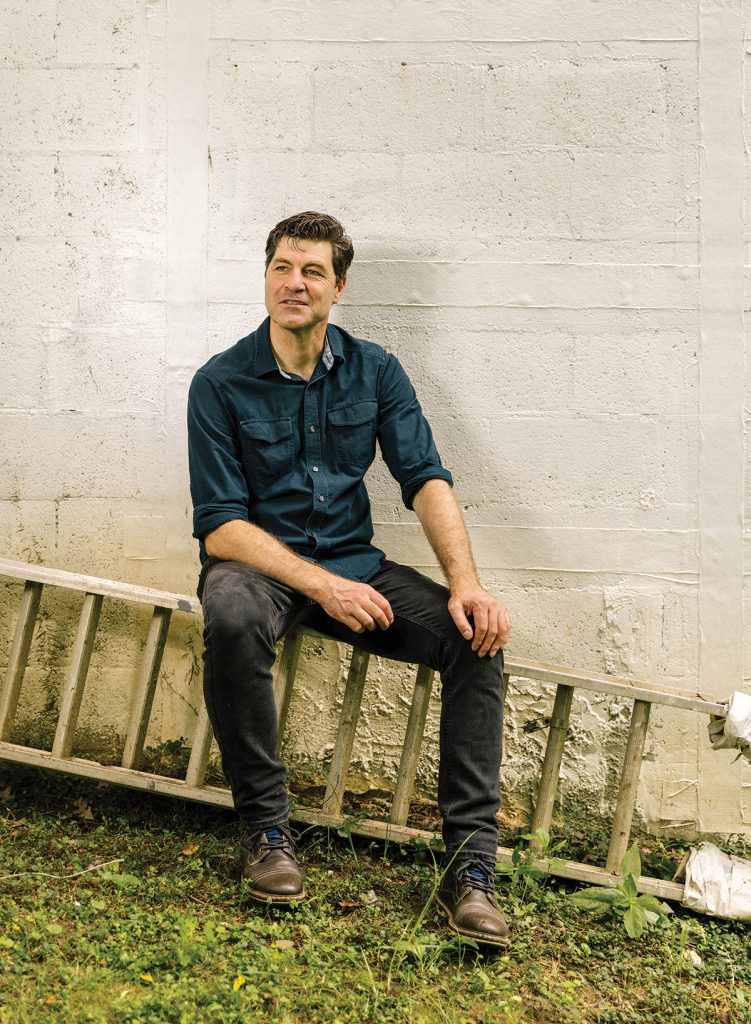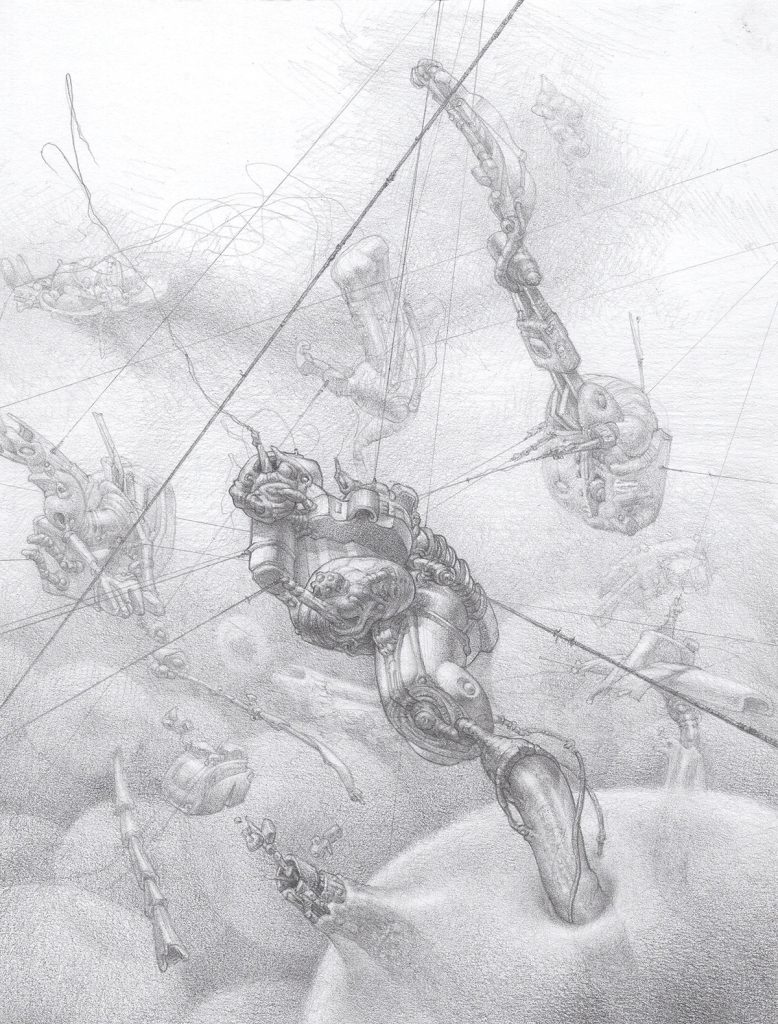
Nick Raynolds was trained in the Renaissance tradition but switched from classical realism to extraterrestrial abstraction.
Portrait by Evan Anderson
When he was 15, Nick Raynolds decided he needed to see someone naked. But, unlike most teenage boys, his intentions were entirely professional.
“I had this idea in my head that if I was going to be a good artist, I needed to draw like Michelangelo,” Raynolds remembers.

That, of course, involved mastering the human form — sans skivvies. But Raynold’s small town in British Columbia was a little more prudish than Italy during the High Renaissance. Art instructor after art instructor balked at the idea of a pubescent kid sketching bare-chested ladies during a figure-drawing seminar.
“No one thought it was appropriate,” admits Raynolds.

So, his father found a pre-college program at Emily Carr University of Art + Design in Vancouver, a day’s drive away. Raynolds attended for two summers and then returned for his BFA, graduating in 1998 and effectively commencing a decade-long independent study in classical realism.

In 2001, he moved to New York City and began to produce a portfolio of charcoal portraits, oil still lifes, and pencil landscape drawings he exhibited in galleries and museums across the country. He spent time at Water Street Atelier, a school rooted in the Renaissance tradition. But about seven years ago, after leaving New York for Asheville’s slower pace, Raynolds lost interest in classical sensibilities.

“My art was becoming stale,” he says. “I knew I had to stop working from life and start working from my head.”
The transition from observation to invention was awkward, though. “I had been working a certain way for so long that the change was pretty unsettling. I fumbled my way through it.”
Today, rather than anguish over tiny details like the shadows cast by power lines or the sharpness of a person’s jaw, Raynolds lets loose. He leans into automatic drawing, a stream-of-consciousness-type artmaking that eschews rational thought for nebulousness and disorder.
“I start by putting shapes and lines and marks on paper. Then, I see what emerges.”
Sometimes, the randomness gives way to wild metaphysical landscapes — a foreign topography you would expect to see in a sci-fi movie. Other times, Raynolds’ subconsciousness reveals an amalgamation — what he calls a “knot” — of bloody kidneys, greasy machine parts, and silvery geodes.
Regardless, every piece represents a departure from traditional coherence and a movement toward absurdism — a steampunk interpretation of elegance.

“The shapes and lines coalesce into something narrative and sequential,” he says. “But there’s still this tension between abstraction and literalism.”
Raynolds, who’s an adjunct professor of art at UNC-Asheville and at Warren Wilson College, admits that his newer work — which he describes as “introspective realism” — speaks to a different audience. Even his Instagram handle, @raynonmars, is a double entendre insinuating that he inhabits a different planet. And yet, in one way, his style is an overt nod to the 15th-century creative.
“During the Italian Renaissance, it was expected that artists depict real life accurately. But a big turning point for artists was invention — when they just started making stuff up.
“Changing one’s style is not the easiest thing to do, but it’s not without its precedents, either — Picasso, Pollock, [Otto] Dix, [Philip] Guston, to name only a few. I feel I didn’t have much of a choice, to be honest. I’m following my instincts.”
Nick Raynolds, Asheville. Bio Brutalism, a collection of drawings and paintings, shows at Blowers Gallery in the D. Hiden Ramsey Library at UNCA (1 University Heights, Asheville) Friday, Aug. 5 through Friday, Sept. 16. For more information, see unca.edu or find Raynolds on Instagram: @raynonmars and @n.raynolds.
Hey dude , love the work love your bravery in jumping in Terra incognito. Great imagination.your friend Antonio new york writing from alabama on way to the land of mystery. Adios